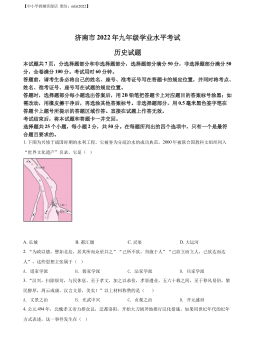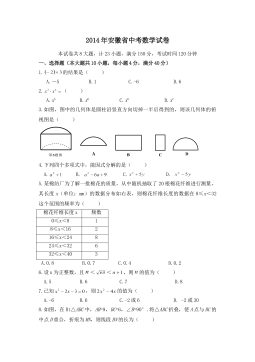file:///D|/Documents%20and%20Settings/harry/Desktop/J%20G%20Ballard/J.%20G.%20Ballard%20-%20High%20Rise.txt
Trying to identify the apartment, Laing stepped across the spreading pool of cold froth.
Sitting there, he might easily have found himself with the longest hangover in the world. He
leaned out over the rail and peered up at the face of the building, carefully counting the
balconies. As usual, though, the dimensions of the forty-storey block made his head reel. Lowering
his eyes to the tiled floor, he steadied himself against the door pillar. The immense volume of
open space that separated the building from the neighbouring high-rise a quarter of a mile away
unsettled his sense of balance. At times he felt that he was living in the gondola of a ferris
wheel permanently suspended three hundred feet above the ground.
Nonetheless, Laing was still exhilarated by the high-rise, one of five identical units in
the development project and the first to be completed and occupied. Together they were set in a
mile-square area of abandoned dockland and warehousing along the north bank of the river. The five
high-rises stood on the eastern perimeter of the project, looking out across an ornamental lake --
at present an empty concrete basin surrounded by parking-lots and construction equipment. On the
opposite shore stood the recently completed concert-hall, with Laing's medical school and the new
television studios on either side. The massive scale of the glass and concrete architecture, and
its striking situation on a bend of the river, sharply separated the development project from the
run-down areas around it, decaying nineteenth-century terraced houses and empty factories already
zoned for reclamation.
For all the proximity of the City two miles away to the west along the river, the office
buildings of central London belonged to a different world, in time as well as space. Their glass
curtain-walling and telecommunication aerials were obscured by the traffic smog, blurring Laing's
memories of the past. Six months earlier, when he had sold the lease of his Chelsea house and
moved to the security of the high-rise, he had travelled forward fifty years in time, away from
crowded streets, traffic hold-ups, rush-hour journeys on the Underground to student supervisions
in a shared office in the old teaching hospital.
Here, on the other hand, the dimensions of his life were space, light and the pleasures of
a subtle kind of anonymity. The drive to the physiology department of the medical school took him
five minutes, and apart from this single excursion Laing's life in the high-rise was as self-
contained as the building itself. In effect, the apartment block was a small vertical city, its
two thousand inhabitants boxed up into the sky. The tenants corporately owned the building, which
they administered themselves through a resident manager and his staff.
For all its size, the high-rise contained an impressive range of services. The entire 10th
floor was given over to a wide concourse, as large as an aircraft carrier's flight-deck, which
contained a supermarket, bank and hairdressing salon, a swimming-pool and gymnasium, a well-
stocked liquor store and a junior school for the few young children in the block. High above
Laing, on the 35th floor, was a second, smaller swimming-pool, a sauna and a restaurant. Delighted
by this glut of conveniences, Laing made less and less effort to leave the building. He unpacked
his record collection and played himself into his new life, sitting on his balcony and gazing
across the parking-lots and concrete plazas below him. Although the apartment was no higher than
the 25th floor, he felt for the first time that he was looking down at the sky, rather than up at
it. Each day the towers of central London seemed slightly more distant, the landscape of an
abandoned planet receding slowly from his mind. By contrast with the calm and unencumbered
geometry of the concert-hall and television studios below him, the ragged skyline of the city
resembled the disturbed encephalograph of an unresolved mental crisis.
The apartment had been expensive, its studio living-room and single bedroom, kitchen and
bathroom dovetailed into each other to minimize space and eliminate internal corridors. To his
sister Alice Frobisher, who lived with her publisher husband in a larger apartment three floors
below, Laing had remarked, "The architect must have spent his formative years in a space capsule --
I'm surprised the walls don't curve . . ."
At first Laing found something alienating about the concrete landscape of the project --
an architecture designed for war, on the unconscious level if no other. After all the tensions of
his divorce, the last thing he wanted to look out on each morning was a row of concrete bunkers.
However, Alice soon convinced him of the intangible appeal of life in a luxury high-rise.
Seven years older than Laing, she made a shrewd assessment of her brother's needs in the months
after his divorce. She stressed the efficiency of the building's services, the total privacy. "You
could be alone here, in an empty building -- think of _that_, Robert." She added, illogically,
"Besides, it's full of the kind of people you ought to meet."
Here she was making a point that had not escaped Laing during his inspection visits. The
two thousand tenants formed a virtually homogeneous collection of well-to-do professional people --
lawyers, doctors, tax consultants, senior academics and advertising executives, along with a
smaller group of airline pilots, film-industry technicians and trios of air-hostesses sharing
file:///D|/Documents%20and%20Settings/harry/Des...Ballard/J.%20G.%20Ballard%20-%20High%20Rise.txt (3 of 73) [2/4/2004 11:23:16 PM]

 2024-11-21 7
2024-11-21 7
 2024-11-21 10
2024-11-21 10
 2024-11-21 5
2024-11-21 5
 2024-11-21 7
2024-11-21 7
 2024-11-21 8
2024-11-21 8
 2024-11-21 7
2024-11-21 7
 2024-11-21 5
2024-11-21 5
 2024-11-21 7
2024-11-21 7
 2024-11-21 9
2024-11-21 9
 2024-11-21 6
2024-11-21 6








 渝公网安备50010702506394
渝公网安备50010702506394
